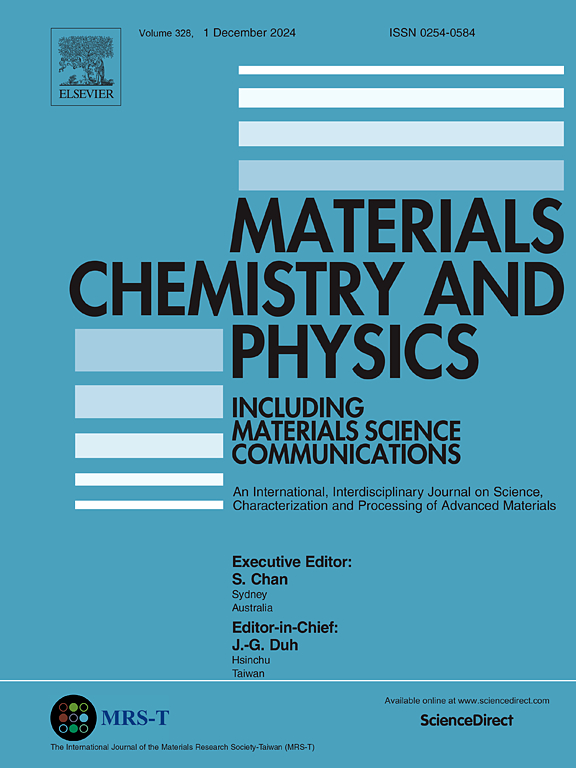Mechanistic Interpretation of Thioglycolic Acid as a Depressant in the Differential Flotation of Molybdenite from Chalcopyrite
IF 4.3
3区 材料科学
Q2 MATERIALS SCIENCE, MULTIDISCIPLINARY
引用次数: 0
Abstract
This study explores the potential of thioglycolic acid (TGA) as an eco-friendly depressant for chalcopyrite in the differential flotation of molybdenite from chalcopyrite. Laboratory flotation experiments and molecular dynamics (MD) simulations were employed to evaluate TGA's effectiveness compared to sodium sulfide. The experiments demonstrated that TGA significantly enhanced chalcopyrite depression, achieving optimal molybdenite recovery (90.43%) and chalcopyrite depression (83.63%) under specific conditions: 2 kg/t TGA dosage, pH 11.5, and 28% solids. Statistical analysis highlighted TGA dosage and pH as the most influential parameters. However, excessive TGA concentrations led to froth destabilization, reducing separation efficiency. MD simulations confirmed TGA's stronger adsorption and hydrophilic modification of chalcopyrite surfaces, reducing its floatability while preserving molybdenite selectivity. The simulations revealed that TGA increases surface hydrophilicity by promoting denser water molecule packing and forming a robust adsorbed layer that prevents collector attachment. These findings were corroborated by surface energy and solvent-accessible surface area (SASA) analyses, which demonstrated TGA’s stronger interaction with chalcopyrite compared to sodium sulfide. The dual-scale approach of this study bridges the gap between laboratory-scale experimentation and molecular-level understanding, offering a comprehensive evaluation of TGA’s potential as a green depressant in mineral processing. By reducing reliance on toxic depressants like sodium sulfide, TGA represents a sustainable alternative for the selective flotation of molybdenite.

巯基乙酸在辉钼矿与黄铜矿差别浮选中的抑制作用机理解释
本研究探讨了巯基乙酸(TGA)作为生态友好型黄铜矿抑制剂在辉钼矿与黄铜矿差选浮选中的应用潜力。采用实验室浮选实验和分子动力学(MD)模拟来评价TGA与硫化钠的有效性。实验表明,在TGA用量为2 kg/t、pH为11.5、固体含量为28%的条件下,TGA显著增强了黄铜矿的抑制作用,达到了最佳的辉钼矿回收率(90.43%)和黄铜矿抑制率(83.63%)。统计分析表明,TGA用量和pH是影响最大的参数。但TGA浓度过高会导致泡沫失稳,降低分离效率。MD模拟证实了TGA对黄铜矿表面具有较强的吸附和亲水改性作用,降低了其可浮性,同时保持了辉钼矿的选择性。模拟结果表明,TGA通过促进更密集的水分子堆积和形成坚固的吸附层来防止收集器附着,从而提高了表面亲水性。这些发现得到了表面能和溶剂可及表面积(SASA)分析的证实,表明TGA与黄铜矿的相互作用比硫化钠更强。本研究的双尺度方法弥合了实验室规模实验和分子水平理解之间的差距,全面评估了TGA作为矿物加工中绿色抑制剂的潜力。通过减少对硫化钠等有毒抑制剂的依赖,TGA代表了选择性浮选辉钼矿的可持续选择。
本文章由计算机程序翻译,如有差异,请以英文原文为准。
求助全文
约1分钟内获得全文
求助全文
来源期刊

Materials Chemistry and Physics
工程技术-材料科学:综合
CiteScore
8.70
自引率
4.30%
发文量
1515
审稿时长
69 days
期刊介绍:
Materials Chemistry and Physics is devoted to short communications, full-length research papers and feature articles on interrelationships among structure, properties, processing and performance of materials. The Editors welcome manuscripts on thin films, surface and interface science, materials degradation and reliability, metallurgy, semiconductors and optoelectronic materials, fine ceramics, magnetics, superconductors, specialty polymers, nano-materials and composite materials.
 求助内容:
求助内容: 应助结果提醒方式:
应助结果提醒方式:


